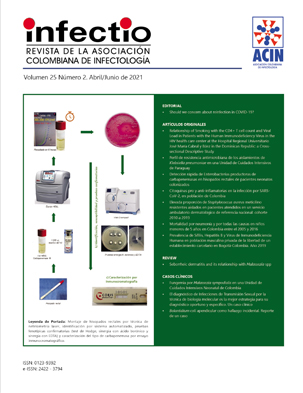Seborrheic dermatitis and its relationship with Malassezia spp
Contenido principal del artículo
Resumen
Seborrheic dermatitis (SD) is a chronic inflammatory disease that that is difficult to manage and with a high impact on the individual’s quality of life. Besides, it is a multifactorial entity that typically occurs as an inflammatory response to Malassezia species, along with specific triggers that contribute to its pathophysiology. Since the primary underlying pathogenic mechanisms include Malassezia proliferation and skin inflammation, the most common treatment includes topical antifungal keratolytics and anti-inflammatory agents. However, the consequences of eliminating the yeast population from the skin, the resistance profiles of Malassezia spp. and the effectivity among different groups of medications are unknown. Thus, in this review, we summarize the current knowledge on the disease´s pathophysiology and the role of Malassezia sp. on it, as well as, the different antifungal treatment alternatives, including topical and oral treatment in the management of SD.

